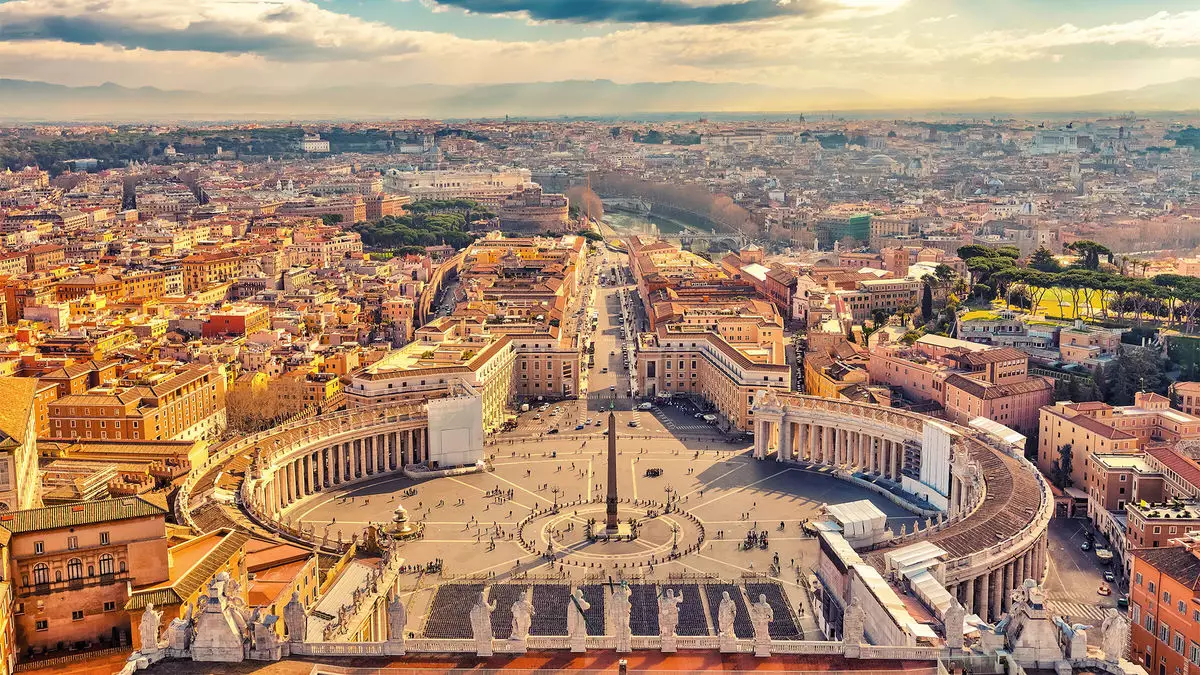The death of Pope Francis on April 21 has triggered not only an emotional response from the faithful but also a significant surge in interest from tourists eager to witness an extraordinary chapter in Vatican history. As cardinals prepare to convene to elect a new pope, travelers are being advised to brace themselves for unusually large crowds and minor logistical disruptions, especially in Rome. This situation encapsulates a moment that blends solemnity with tourism—an intersection that offers a glimpse into the deeply-rooted cultural and spiritual significance of the Vatican.
Given the backdrop of the ongoing Holy Year, which runs from December 24 to January 6, 2026, the influx of visitors is expected to reach new heights. With projections suggesting a staggering 32 million pilgrims will descend upon the Eternal City, the spectacle of the Vatican is more than just a tourist attraction; it’s a monumental event steeped in spirituality. For those with faith, being in Rome during this period resonates on a personal level, intertwining their religious journeys with the unfolding of history.
The Business of Pilgrimage
Operators in the travel industry have voiced a collective resilience against potential disruptions. According to Gregory Sylvain, senior director of religious tours for Unitours, the enduring nature of tourism in Italy serves as a backbone for the local economy. As he aptly points out, the worst-case scenario for Italy’s tourist-driven business community is significant alterations to the flow of visitors. These insights indicate a strong potential for adaptability—operators are keen to adjust itineraries and maintain communication with ground teams, ensuring a seamless experience amid potential challenges.
However, the ongoing Jubilee celebrations complicate logistics. Tourists hoping to witness the papal conclave may encounter hurdles, as hotel accommodations are becoming scarce and longer lines are expected due to heightened interest in both events. Steve Perillo, owner of Perillo Tours, echoes this sentiment, committing to adhering to planned itineraries while navigating expected crowd surges.
The Challenge of Timing
This intersection of mourning and celebration creates a unique set of challenges for travelers keen to fulfill their spiritual aspirations. Fabrizio Bertoncin, director of tour directors at EF Go Ahead Tours, emphasizes the dual nature of the experience—many visitors recognize that their trip coincides with a pivotal moment in history, adding layers of emotional weight to their journey.
In light of these developments, potential travelers must contend with the changing landscape of availability and accessibility. The challenge becomes how to seize the opportunity to bear witness to these significant events without sacrificing comfort or experience. Travel advisor Karyn Pavich notes that her clients are seeking last-minute trips, and she is proactively setting realistic expectations about crowding and logistical limitations. By providing creative alternatives and solutions, she transforms challenges into opportunities for memorable experiences.
Immediate Solutions and Long-Term Perspectives
The desire to partake in this extraordinary moment, while also appreciating the burdens it carries, highlights an important shift in travel behavior. Increased searches for flights to Rome accentuate this trend, suggesting that the emotional significance of the events can stimulate impulsive travel decisions. However, potential travelers must remain aware that the bustling atmosphere may not yield the spiritual solitude they seek.
Understanding that the Holy Year is a significant driver of crowd dynamics offers insight into the broader implications for tourism in Rome. As the city stands poised to welcome millions, it is apparent that both religious significance and business interests are intertwined—each contesting for space and attention. This duality reflects the very essence of Rome; it is at once a sacred site and a center for commerce, tourism, and cultural exchange.
As crowds gather to witness the unfolding events at the Vatican, the spirit of Rome transforms into an intricate tapestry of faith, history, and collective experience. For travelers ardent in their desire to engage with this profound moment, the path may be fraught with challenges. Yet, within these challenges lie opportunities for deeper connections and a richer understanding of the complex emotional landscape that defines Vatican City today.


Leave a Reply